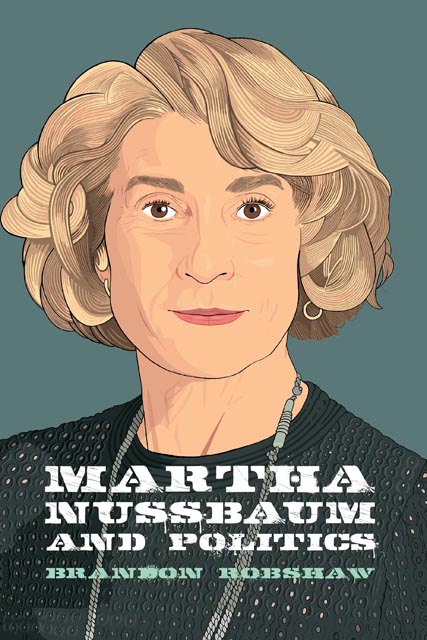Book contents
- Frontmatter
- Contents
- Introduction: A Public Intellectual
- Chapter 1 Nussbaum and the Ancient Greeks: Tragedy, the Luck-Proofing of Life, and Practical Rationality
- Chapter 2 Nussbaum and Education: Socratic Scrutiny, World Citizenship and the Narrative Imagination
- Chapter 3 Nussbaum and Feminism: Liberal Feminism, Adaptive Preferences and FGM
- Chapter 4 Nussbaum and Capabilities: Human Nature, Human Flourishing and the Ten Capabilities
- Chapter 5 Nussbaum and Animal Rights: Capabilities for Animals
- Chapter 6 Nussbaum and Religion: Liberty of Conscience, Accommodation and Burqa Bans
- Chapter 7 Nussbaum and the Emotions: Emotions as Cognitive Judgements – and a Normative Critique of Anger
- Chapter 8 Nussbaum and Global Justice: Cosmopolitanism, Material Aid and Immigration
- Conclusion: An Organic Whole
- Bibliography
- Index
Chapter 3 - Nussbaum and Feminism: Liberal Feminism, Adaptive Preferences and FGM
Published online by Cambridge University Press: 18 October 2023
- Frontmatter
- Contents
- Introduction: A Public Intellectual
- Chapter 1 Nussbaum and the Ancient Greeks: Tragedy, the Luck-Proofing of Life, and Practical Rationality
- Chapter 2 Nussbaum and Education: Socratic Scrutiny, World Citizenship and the Narrative Imagination
- Chapter 3 Nussbaum and Feminism: Liberal Feminism, Adaptive Preferences and FGM
- Chapter 4 Nussbaum and Capabilities: Human Nature, Human Flourishing and the Ten Capabilities
- Chapter 5 Nussbaum and Animal Rights: Capabilities for Animals
- Chapter 6 Nussbaum and Religion: Liberty of Conscience, Accommodation and Burqa Bans
- Chapter 7 Nussbaum and the Emotions: Emotions as Cognitive Judgements – and a Normative Critique of Anger
- Chapter 8 Nussbaum and Global Justice: Cosmopolitanism, Material Aid and Immigration
- Conclusion: An Organic Whole
- Bibliography
- Index
Summary
In 1999, Martha Nussbaum published Sex and Social Justice. Rather than being one sustained argument as her earlier books were, it is a collection of essays that Nussbaum wrote at various times during the 1990s. Some reflect Nussbaum's interest in literature – for example, one essay is a memoir about meeting the classical scholar Sir Kenneth Dover, while the final chapter is a literary appreciation of Virginia Woolf's novel To the Lighthouse , focusing on how it treats the philosophical problem of knowledge of other minds. These are only tangentially relevant to the main themes of the book. Nevertheless, the book does have clear themes overall, reflecting a decade of Nussbaum's thought on feminism, liberalism, and how to approach practical problems of injustice. It is significant in her oeuvre in that it is the first fully worked-out version of her liberal feminist position, which was adumbrated in Cultivating Humanity (1997); it also contains a trenchant defence of gay and lesbian rights. And it features the first appearance of her capabilities approach, which will be developed in her next book, Women and Human Development (2000) (see Chapter 4). Sex and Social Justice includes, too, further criticism of postmodern theory, directed against its relativism, indeterminacy and what Nussbaum sees as its lack of engagement with the real world. In the same year, Nussbaum also published a short but famous (in some quarters infamous) attack on the postmodern gender theorist Judith Butler. It is an over-simplification, but nevertheless a useful one, to divide the history of modern feminism into three waves:
The first wave arguably began in the late eighteenth century, with Olympe de Gouges's Declaration of the Rights of Woman and of the Female Citizen (1791) and Mary Wollstonecraft's A Vindication of the Rights of Women (1792). However, first-wave feminism gets properly underway in the mid-nineteenth century, according to Marlene Legates’ history of feminism, In Their Time (2001). Prior to that period, Legates says, feminist networks were either ‘loosely organized or short-lived’ (2001: 197). From the 1850s onwards, feminists in Europe and North America formed ‘more permanent and sophisticated organizations’ (2001: 197) and campaigned for a range of causes: the right to education, the right to follow professional careers, to escape economic and legal dependence on husbands, and for political inclusion.
- Type
- Chapter
- Information
- Martha Nussbaum and Politics , pp. 51 - 75Publisher: Edinburgh University PressPrint publication year: 2023



